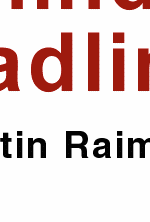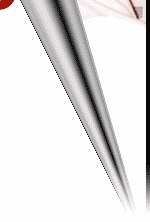
THE
DIAZ PHOTO AS METAPHOR
The
first image that flashed across the wires was, incredibly,
the truth. The photo, taken by Alan Diaz, an Associated Press
photographer, flashed across television and computer screens
worldwide, including this site, showed an INS agent dressed
up in a military style drag, compete with helmet, goggles,
and jackboots to match, pointing a gun directly in Elian's
face, the tip a few inches from the little boy's nose. The
angelic Donato Dalrymple, one of the fishermen who rescued
Elian from the sea, is holding the kid in his arms, eyes wide,
mouth agape, as if transfixed by the demonic vision out of
Hell that confronts him. Yet he is not afraid, but only looks
puzzled, as if he cannot quite believe his eyes. The INS stormtrooper
looks like one of Darth Vader's Imperial Commandos, snarling
and red-faced, the very picture of brutal aggression. Donato's
stance projects both serenity and intransigence: he is very
still, one arm holding the child and other extended
in a gesture that is protective and also seems like a benediction.
This image is a like a painting rendered by an artist who
fully understands the forces at work in the world: it is a
metaphor on many levels – political and religious –
for what is going on in the world of the new millennium.
IF
THINE EYE OFFENDS THEE . . .
Such
a powerful image could not be allowed to circulate unchallenged,
and so Reno and her her journalistic auxiliary rebounded from
the initial shock of sudden exposure with well-trained swiftness:
the Attorney General immediately held a news conference and
appealed to the reporters present and to the American people
not to believe the evidence of their own eyes:
"One
of the beautiful things about television is it shows exactly
what the facts are. As I understand it, if you look at (the
picture) carefully you'll see that the gun was pointed to
the side and the finger was not on the trigger."
THE
BEAUTY OF TELEVISION
Peering
through those magnifying glass spectacles, hooting like some
malevolent owl, she said it in that monotonic singsong supposed
to signify a note of authority. What was communicated, instead,
was her own addled near-sightedness, her moral if not literal
blindness. Babbling about the "beauty" of television, Reno
seems strangely unaware that we are talking about a still
picture, not a movie: the television coverage of the blitz
was fuzzy, herky-jerky, and disconnected. The media, camped
out in front, had been taken by surprise, and TV cameras failed
to capture the high drama. It was left to a lone Associated
Press photographer, Alan Diaz, to freeze-frame that moment,
which clearly shows the soldier's quivering finger hovering
less than an inch away from the trigger: the gun is pointed
in the direction of the boy and his protector, and while not
aimed directly at Donato's head it seems well on its way there.
But more importantly, the stormtrooper is not merely snarling
but speaking: according to Marisleysis Gonzales, he
yelled: " Give
me the f – – -g boy, or I'll shoot !"
SPIN
CYCLE
Reno's
flacks went on the offensive in an all-out effort to discredit
the photographs, and convince the American people that what
was plainly visible was in reality something other than it
seemed. One strategy was to attack different versions of the
original, and they immediately pounced on CNN, strangely enough,
which had initially run a severely cropped version of the
photo with the fisherman dropped out and showing only the
INS agent with the gun pointed at a screaming Elian. The New
York Times reports in Sunday's edition CNN's claim that
"no editorial decision" was made to crop the photo so severely,
another way of saying that it was someone in the graphics
department driven mad by overexposure to Photoshop. CNN dutifully
showed the whole photo – but that only made matters worse.
The expert spin doctors over at the White House were perplexed,
and going into panic mode: how were they going to spin themselves
out of this one?
A
GOOD OFFENSE
The
best defense is a good offense – that has been the method
of the Clintonistas, and it has served them well. Don't answer
the charges – just smear your accusers. If some inconvenient
facts are about to come to light, just bomb an aspirin factory
in the Sudan. Stonewall all requests for documents with Nixonian
doggedness: Delay, divert, and destroy. The administration,
working in conjunction with the father and his lawyer, went
on the offensive: within a few hours of the Diaz photo's release,
they were preparing their own counter-image.
SOCIALIST
REALISM?
As
if in an act of contrition for their earlier faux pas, CNN
kept it up on the screen for what seemed like hours: not a
video, as one might expect, but yet another still picture,
an iconic portrait of a beaming father holding Elian in his
arms. Both have the beatific look of happy workers and peasants
painted by artists of the "socialist realist" school, whose
highly idealized works masked the reality of the Soviet Gulag
with a thick coat of lacquered blandness. Juan Miguel's wife
is holding their six-month-old infant off to the side, but
seems strangely disconnected from the scene, a somewhat distracted
onlooker staring off into the distance.

THE
HAIR QUESTION
This photo, meant to reassure
the public and show that Elian is where he belongs, is instead
strangely disturbing on several levels. To begin with, its
release – followed shortly afterward by others –
was preceded by a letter from Gregory
Craig, Juan Miguel's lawyer, asking the media not to transmit
images of the raid, a request that was unanimously ignored.
More ominously, there is the Hair Question, a seeming anomaly
in the hastily-thrown together image served up for our delectation.
For it seems that Elian – only recently given one of
those "fade" haircuts that make growing numbers of American
male teenagers resemble a race of humanoid mushrooms –
has miraculously acquired a full head of hair in only a few
hours.
A
STARTLING DISCONTINUITY
It
was the eagle-eyed Lucianne Goldberg, of Lucianne.com ,
who first spotted this odd little discrepancy, and Matt
Drudge picked it up , asking in a banner headline
: "How Did Elian's Hair Grow So Fast?" The competing images,
run side-by-side, are startling in their discontinuity. Of
course, the boy's paleness and fragility, next to the tanned
and vigorous Elian we have grown used to seeing, could
be due to camera angles, indoor lighting, and the camera
itself: a disposable one we are alternatively told was bought
by an INS agent, and/or bought and used by the father, to
record the Reunion. But what about the Hair Question? This
is the most vexing aspect of the Craig photos: not only is
Elian's hair longer, especially on the sides, but it is curlier
and darker. A gaunter Elian than we are accustomed to seeing
beams in his father's embrace. "That hair is not Elian's because
I had myself cut his hair," said a weeping Marisleysis at
a Washington news conference. "Look how short his hair is
here... And look how long that hair is in the picture that
they show today. That hair is not Elian's... I cut hair. It's
my hobby..Three days before, I had given him a haircut!" In
the Craig photos, the evidence of his fresh haircut seems
to have completely vanished – and what, I ask you, is
up with that?
THE
OLDEST TRICK IN THE BOOK
The
falsification of photographs is the oldest trick in the modern
propagandist's book, and if you think that such methods are
too crude then you underestimate the brazenness of this gang
in the White House. It is all too believable that between
the intelligence services of two countries, and the Clintonista-Fidelista
propaganda machine, someone came up with a creative
solution to the Justice Department's problem of how to counteract
the Diaz image and deflect its impact on public opinion. At
any rate, it looks suspicious to me, and given the
record of this administration the suspicion turns into something
much closer to certainty. The crudeness of the deception,
however, is not because a photo of a screaming bawling Elian
was radically reconstructed by the manipulation of pixels.
It could well be that someone is trying to pass off an old
photo as one that was taken only hours after Saturday's dawn
raid. It is, at any rate, a possibility – and
that is what makes this such a depressing time to be living
in.
DOWN
THE MEMORY HOLE? – NOT QUITE YET
From
" the
picture that fooled the world ," the British
Independent Television Network's forgery of photos allegedly
depicting a Serbian "concentration camp" in Bosnia, to the
Craig photos, to the lies
put out by the Kuwaiti lobby about babies being
ripped out of incubators – the manipulation of images,
in sound and pictures, in the service of politics is nothing
new, and in the West has achieved the status of a high art.
Its practitioners, the generals in the media war of battling
images, inhabit the nation's newsrooms as well as the corporate
suites and halls of government: but all the public relations
firms in the world, all the inherent pro-government bias of
the American media, all the spinning and complex explanations
of government officials and their kept pundits, cannot erase
the searing images of the Diaz photos. How the administration
must wish that we lived in the fictional world of George Orwell's
classic novel, Nineteen Eighty-Four, in which inconvenient
photographs and other evidence could always be stuffed down
into the Memory Hole and instantly vaporized. Such power,
for the moment, eludes them – and thank God for that.
FOLLOW
THE MONEY
In
my last
column, I gave my theory as to why the Clintonistas have
gone to such lengths to pursue a six-year-old boy and make
sure he is never granted political asylum in the US. As an
addendum to this "legacy" theory, and complementary
to it, is Orlando Sentinel columnist Charlie Reese's
theory of the Archer-Daniels
Midland connection. Reese's piece is today's "Spotlight,"
and he tells a fascinating tale in which little Elian is not
a pawn of cold war politics but "a pawn in an international
business deal" involving the politically-connected ADM,
the Clinton administration, and others with business interests
in Cuba, as well as the ideologically-driven National Council
of Churches. Follow the money: this is always excellent advice
– particularly when we are talking about the most ravenously
corrupt administration since the days of Ulysses S. Grant.
|







